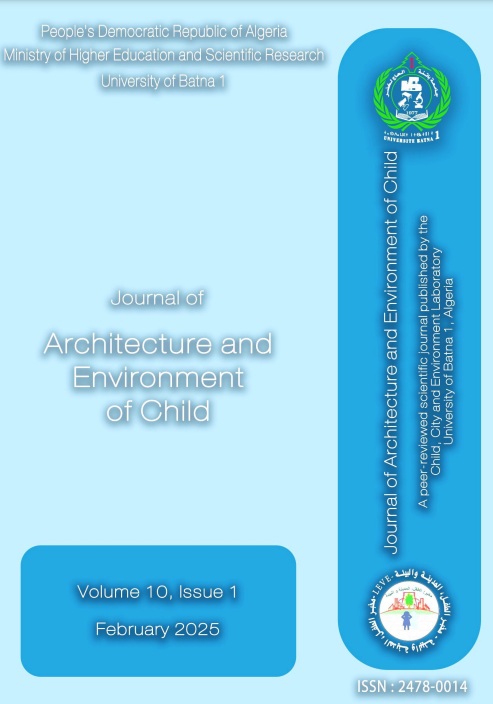Characterization of the architectural and urban forms of informal individual housing in Biskra.
Keywords:
informal individual housing, self-built, builtsubdivision, architectural and urban forms, degree of informalityAbstract
Like most Algerian cities, self-built houses in Biskra continue to emerge without authorization and without respect for urban planning laws, outside of any legal formalities. Both in subdivisions that have received subdivision permits and in illegally divided and sold plots without notarial deeds or urban planning certificates, informal housing is developing anarchically both outside and within urban perimeters. It is spreading rapidly, extending into the outskirts of the city, sometimes at the expense of the palm grove, thus threatening intrinsic landscapes of great value that are now on the verge of disappearance. Numerous studies aim to explore the causes and effects of this problem that plagues our cities, as well as the proposed solutions for their eradication. Unfortunately, they remain without tangible results and far from being effective and feasible.
However, it is of great interest to categorize the architectural and urban aspects that materially define the nature of the informal specific to each locality. To this end, this study seeks to explore the inventory of the most present informal architectural and urban characteristics in self-built individual housing in Biskra. The typological and morphological approach adopted in the analysis of a sample of about ten self-built houses belonging to the same subdivision allows for the establishment of a list designed according to the order of importance of these aspects in order to measure the degree of their informality. The main results of this essay show that, in relation to construction regulations and technical standards, almost all analyzed elements are informal. The degree of informality is high. The most prominent characteristics are the CES, the dimensions of the courtyards, the surface ratios of the openings, etc. However, a significant number of these houses seem appropriable to their owners who have lived there for over 30 years, both socially and climatically as well as functionally.

